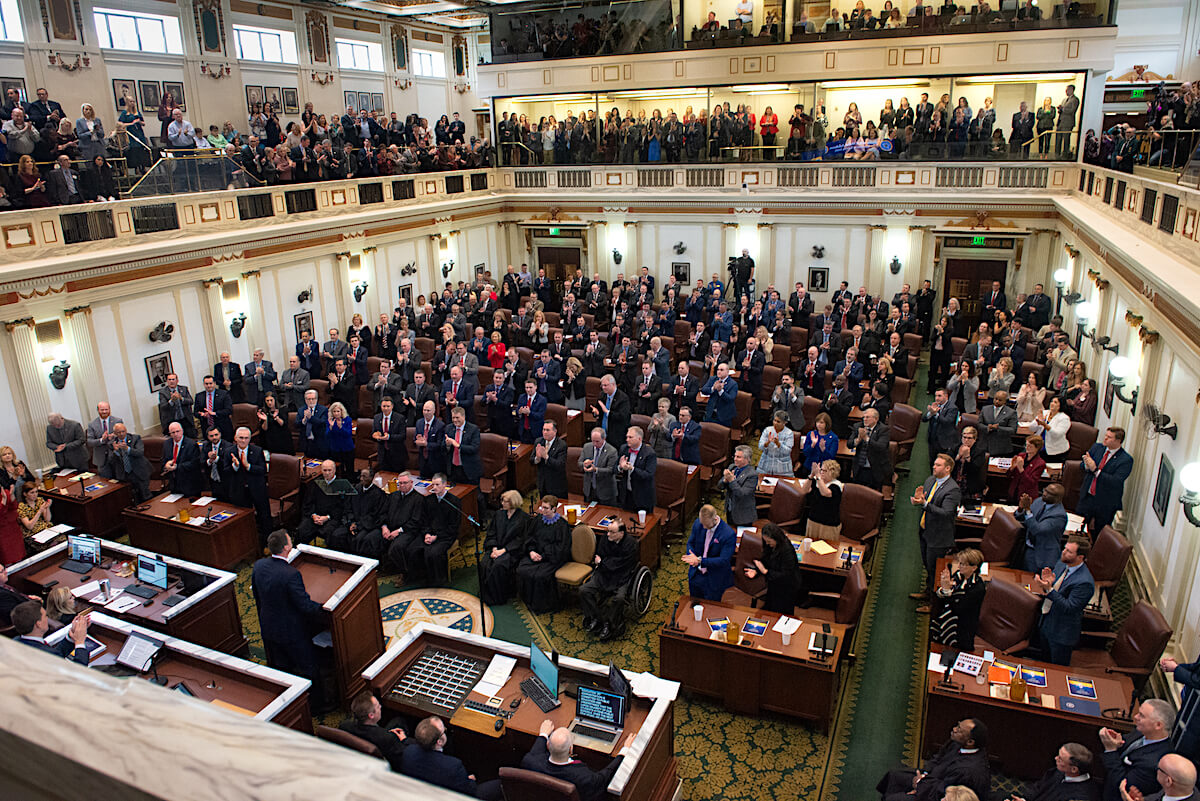

Leaders of the Oklahoma Legislature agree that stashing away additional savings in preparation for future fiscal downturns should be a priority this session, but details on how much money they will save and where they will put it are still being negotiated.
For months, Gov. Kevin Stitt has consistently called for the Legislature to proactively retain at least $200 million of appropriatable dollars beyond what will automatically be deposited into the state’s Rainy Day Fund.
Officially called the Constitutional Reserve Fund, the Rainy Day Fund was created by voters in 1985 as a way to mitigate sudden shortfalls of state revenue. When Oklahoma’s economy is healthy, the fund automatically fills with money and is capped at 15 percent of the current revenue estimate of the general revenue fund.
But considering how the state’s overall budget has grown, Stitt has articulated a need to save even more money for a proverbial “rainy day.” Stitt has referenced benchmarks for the same goal: having three months worth of operating expenses as cash on hand; stockpiling dollars beyond the roughly $811.3 million that will be; reaching a total savings balance of $2 billion.
“The governor has said throughout his campaign that he wants $2 billion in savings,” said Donelle Harder, deputy secretary of state. “There is a Senate resolution to raise the Rainy Day Fund cap to 30 percent that we are very supportive of.”
SJR 1 by Sen. Joe Newhouse (R-Broken Arrow) would ask Oklahoma voters to approve doubling the 15 percent Rainy Day Fund cap to 30 percent, but the measure did not receive a hearing by Thursday’s committee deadline.
“A lot of the SJRs got laid over just for the sheer fact that they can’t go on the ballot before we have another session, so a lot of the authors said, ‘Hey, I don’t want to put it out there and give opposition a year to fight against it,'” Sen. Greg McCortney (R-Ada). “I can’t say for sure that’s why that one wasn’t heard, but on a lot of the SJRs that didn’t get heard, it was just merely a timing issue.”
McCall: Revenue Stabilization Fund offers flexibility
With the potential to raise the Rainy Day Fund cap delayed until 2020, lawmakers are considering other options for saving some of next fiscal year’s projected revenue increase.
“We need more savings. We just don’t have the reserves we need to weather a really tough storm. We’ve just proven that in the last four years,” House Speaker Charles McCall (R-Atoka) said. “The Rainy Day Fund is going to hit its cap, and at that point in time we should be looking at funding the (Revenue) Stabilization Fund.”
RELATED
House moves $1,200 teacher pay raise, Senate sees classroom priority by Tres Savage
Lawmakers created the Revenue Stabilization Fund in 2016, instituting a new formula for revenue collected above a rolling five-year average to be deposited in the RSF.
“The bottom line on the Revenue Stabilization Fund is that it can be adjusted,” McCall said. “We could change the parameters with statute rather than with a ballot measure.”
Lawmakers have options, according to House Appropriations and Budget Chairman Kevin Wallace (R-Wellston).
“The big argument and debate is going to be whether or not we are invested in core services to the extent the public believes we should be before we save,” Wallace said.
Senate Appropriations and Budget Chairman Roger Thompson (R-Okemah) raised that question, too.
“My thought is we need to make sure we are handling the core needs of the state,” Thompson said. “You can save yourself into the poor house if you’re not careful.”
During a Monday press availability, Senate President Pro Tempore Greg Treat (R-OKC) deferred to Thompson on discussing specific negotiations.
“Savings is an important thing for our caucus,” Treat said. “I don’t know at the end of the day, with all the different demands for money, what we will put into savings.”
Wallace said negotiations are ongoing.
“I put out a quote that I think it would be prudent to save 10 percent of the surplus,” Wallace said. “I know that’s not meeting the governor’s request of $250 million — and now he’s down to $200 million — but I think the Legislature is in support of savings, not spending everything we have in revenue.”
Echols: ‘In this building, we often attack an idea’
Whichever option is ultimately chosen, House Majority Floor Leader Jon Echols (R-OKC) said he believes Stitt and lawmakers want to be transparent about creating new savings, whether it’s through hiking the Rainy Day Fund cap, dedicating money to the Revenue Stabilization Fund or creating a new fund similar to State Question 800, which failed in November.
“It was very similar, and it was voted down,” Echols said.
Echols referenced 2013 budget negotiations when he was a freshman lawmaker not in House leadership. State revenues were up, and the Rainy Day Fund hit the 15 percent cap.
“We probably would have saved some more money, but we weren’t capable of doing that because of the constitutional cap,” Echols said. “So it might make sense — instead of creating a new fund — to just raise that reserve amount that we are capable of holding back.”
Echols praised Stitt’s call for savings despite uncertainty about how to meet the request.
“I think in this building, we often attack an idea as opposed to focusing on the overall goal. Gov. Stitt’s overall goal is more economic stability for the budgeting process in Oklahoma,” Echols said. “I think that’s a goal we should all be able to get behind. How do we accomplish that? Should there be another $200 million (set aside)? Those are all things that are going to get negotiated out in the budget process.”





















